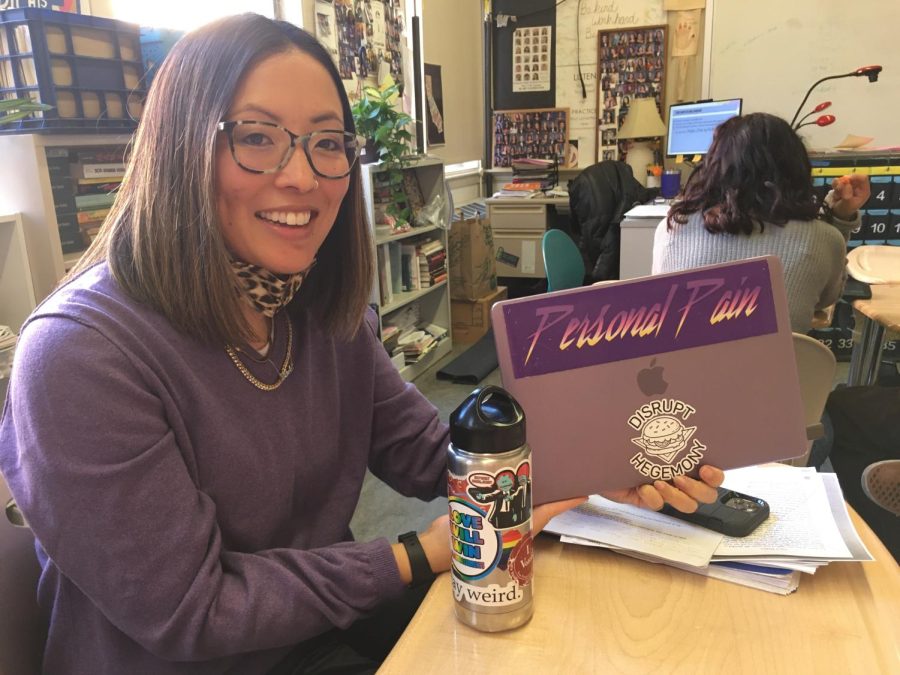Put a pin on it!
December 15, 2022
Pins, buttons and stickers galore! From clothing and accessories to makeup, there has long been an abundance of ways students have expressed themselves. One of the most prominent trends in recent years has been the use of stickers on laptop cases or the donning of colorful enamel pins and buttons on the exterior of backpacks and tote bags. While some students are hoping to promote a cause or show support for a movement, others simply just like displaying something interesting and eye-catching.
Curious about the different stories hiding behind the stickers and pins students choose to put on their school supplies, I interviewed a few students and faculty who had interesting pins and stickers to uncover some of the stories that hide behind the colorful graphics.
English teacher Nichole Vaughan carries around a computer adorned with a purple case and two stickers which read “Personal Pain” and “Disrupt Hegemony” (hegemony: leadership or dominance). Vaughan had been a part of The Bay Area Writing Project over the summer, a program based out of UC Berkeley that paid teachers to discuss teaching writing. From there, she and a couple other colleagues created the stickers to remember some humorous moments and inside jokes.
“The first sticker is a purple sticker that says personal pain that’s in the font of the prince movie, Purple Rain and it’s an inside joke that came from someone wearing a Purple Rain t-shirt to one of our meetings. And someone had made the joke that he thought that it had said personal pain. And then for the rest of the day, anytime that we complained about something or talked about a struggle that we have as teachers or individuals, we would just yell up personal pain,” Vaughan said.
The other sticker relates directly to another teacher’s experience with teaching English, shared at the same summer program. While many people have approached her to ask if the sticker meant that Vaughan is a vegan, the stickers actually have a completely different meaning.
“It says disrupt and then there’s a picture of a cheeseburger or hamburger and then it says hegemony and this came from one of the lessons from the same program. One of the teachers was talking about how teaching the hamburger style essay really limits what students feel like they’re able to do with their writing when they’re younger. And so she taught seventh grade, and she was about not teaching the hamburger style. And so we made the joke that she’s disrupting hamburger hegemony,” Vaughan said.
The unconventional stickers displayed are usually met with confusion or curiosity by new students who are unaware of the backstory to the stickers. Despite how she usually needs to explain their meaning, the stickers represent her as an english teacher and serves as a conversation starter when meeting new people.
“I think that they are a form of self-expression because they offer up conversations, I’ve had so many people ask questions about them,” Vaughan said. “And it always stems back to like a place or an event that’s meaningful for me. And even though I have to explain things I feel like giving that explanation provides insight to who I am as a person, and a teacher.”

Senior Pirada Laopraseut also has a colorfully decorated laptop with various stickers on it. Compared to Ms. Vaughan, the stickers are smaller and from a variety of different people and places.
“Most of them are just from like different places. These are from just candy packages, these are from K-Pop albums. And this one is from San Francisco and these are from National Portfolio Day. And my oldest sticker is this klepto cat one from a customer at my mom’s restaurant, I’ve had this one for five years. Boba Guys, DAA. Basically the thing with stickers is when my friends have no idea what to give me for my birthday or the holidays, I always just ask for stickers because I like decorating my laptop,” Laopraseut said.
At first glance, the seemingly random placement of stickers may not convey a universal theme. From hearing the stories behind the stickers, the stickers begin to reflect specific interests and also a common thread of artistic creativity.
“They say my interests. For example, I have like some anime stickers on here, I have stickers from my K-Pop albums. And then I have Cheburashka, which is a communist animated film saying trans rights so I guess that’s pretty reflective of me. And then skating, I did skate, not anymore, but my friend actually got this for me because I used to skate with them a lot,” Laopraseut said.
Laopraseut also has a few buttons on their backpack, some from anime and other popular culture series. Most notably, one button shows an illustrated muscular Garfield that says “Leftists ♡ Lasagna” and “Right Wing ♡ Rubbish,” which was created for an assignment in a Government class relating to the use of pins in presidential elections and other political movements.
“I really like Garfield. And this was for a project in government where we got to make our own pins on what we believe, what we want to tell the world, and I want to tell the world that leftists love lasagna and the right wing love rubbish with a very striking visual just to capture the attention and it has,” Laopraseut said.
Pins and stickers also have the ability to spread a message and promote a cause. A notable example commonly seen is students with pride flags or rainbow hearts to show solidarity and support the LGBTQ+ community.
“I have a rainbow heart on my bottle too because I have always felt really strongly about advocating for and being a proponent of gay rights. I had a mentor in college who was a gay man who would talk openly to me about how he didn’t like being in Chico sometimes because he felt so isolated and that people were very judgmental of him. Our conversations really opened my eyes to like the importance of people being able to openly express themselves,” Vaughan said.
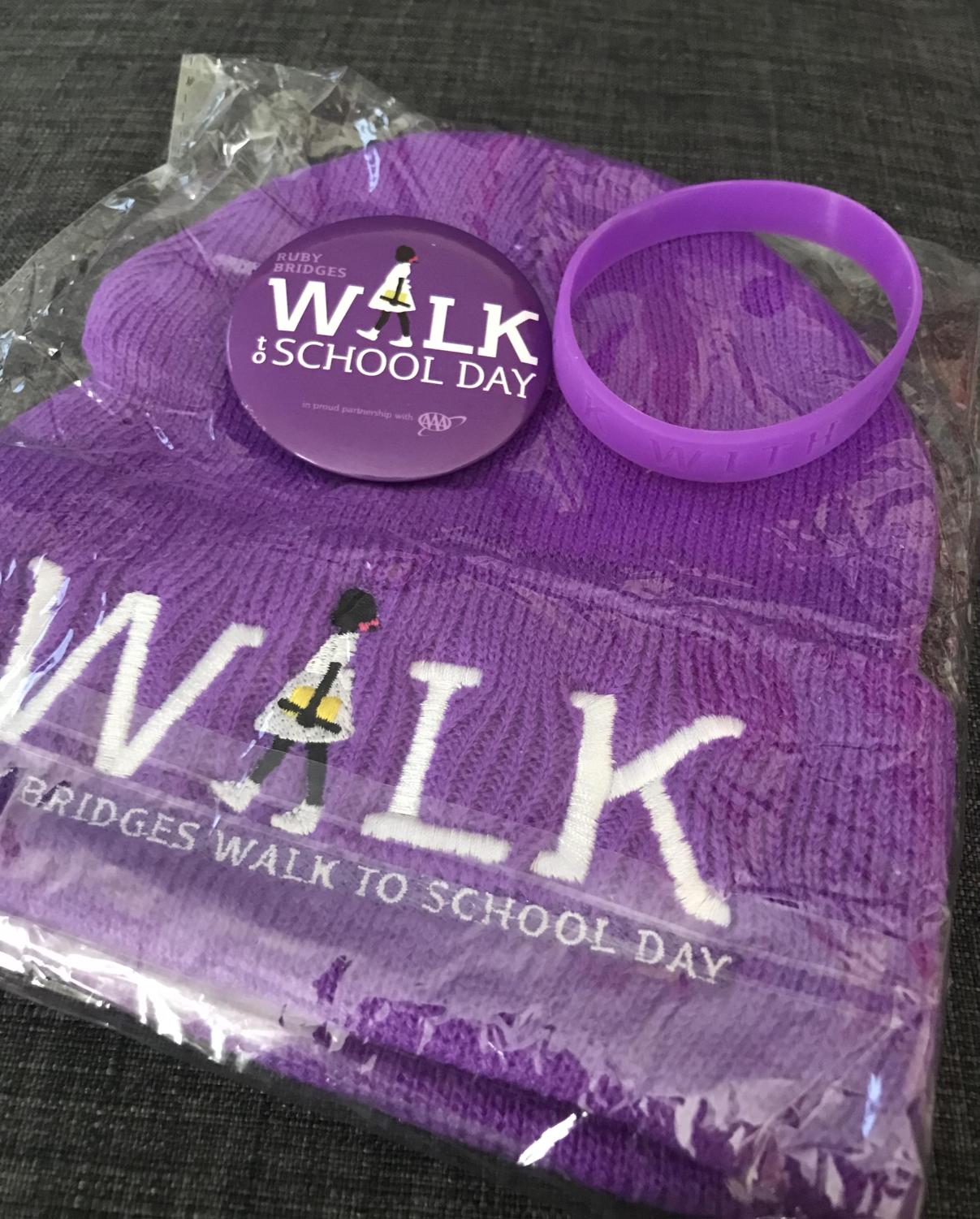
Locally at Sequoia, there was recently an event on November 14, 2022, Ruby Bridges Walk to School Day, that was organized by Sequoia’s Black Student Union and promoted using wristbands and pins. Recognizable by the signature purple and white color theme, many students were seen with the Ruby Bridges pins on their backpacks during and following the event.
“There’s a nationwide event called Ruby Bridges National Walk to School Day. And they had sent our advisor some merchandise […] Because we felt that it was important for people to know a bit more about Ruby Bridges and we had the means to do it, we put the event together,” Mia Hunt, president of Black Student Union, said. “We had wristbands, we had buttons…I think that it helps publicize the event and honor Ruby Bridges, because it got people to start asking questions and I think it will continue to help publicize the event in the future.”
For many students on campus, the buttons they put on their backpacks also represent a part of their culture and honor family members. An aspect of many Polynesian cultures, buttons, lanyards and wristbands are worn to remember a family member that had passed away.
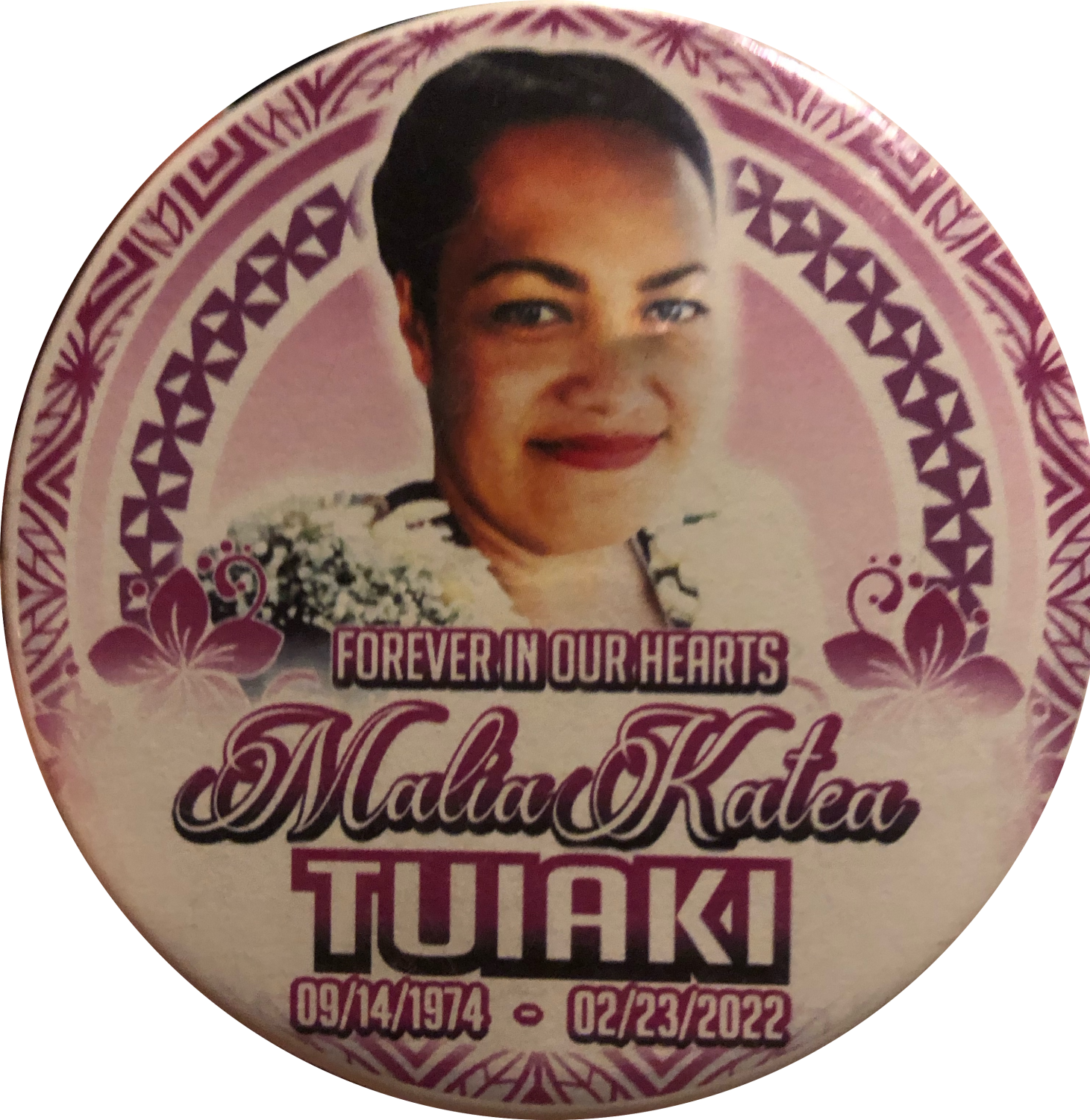
“I usually wear three buttons…on each one of them, it’s a family member of mine that has passed away. And I wear them just so I can remember them every day and keep them with me. And I think of it as kind of a motivation to remember why I love family so much. It’s really important to me, so I wear them with me every day to remember them,” junior Tony Veimau said.
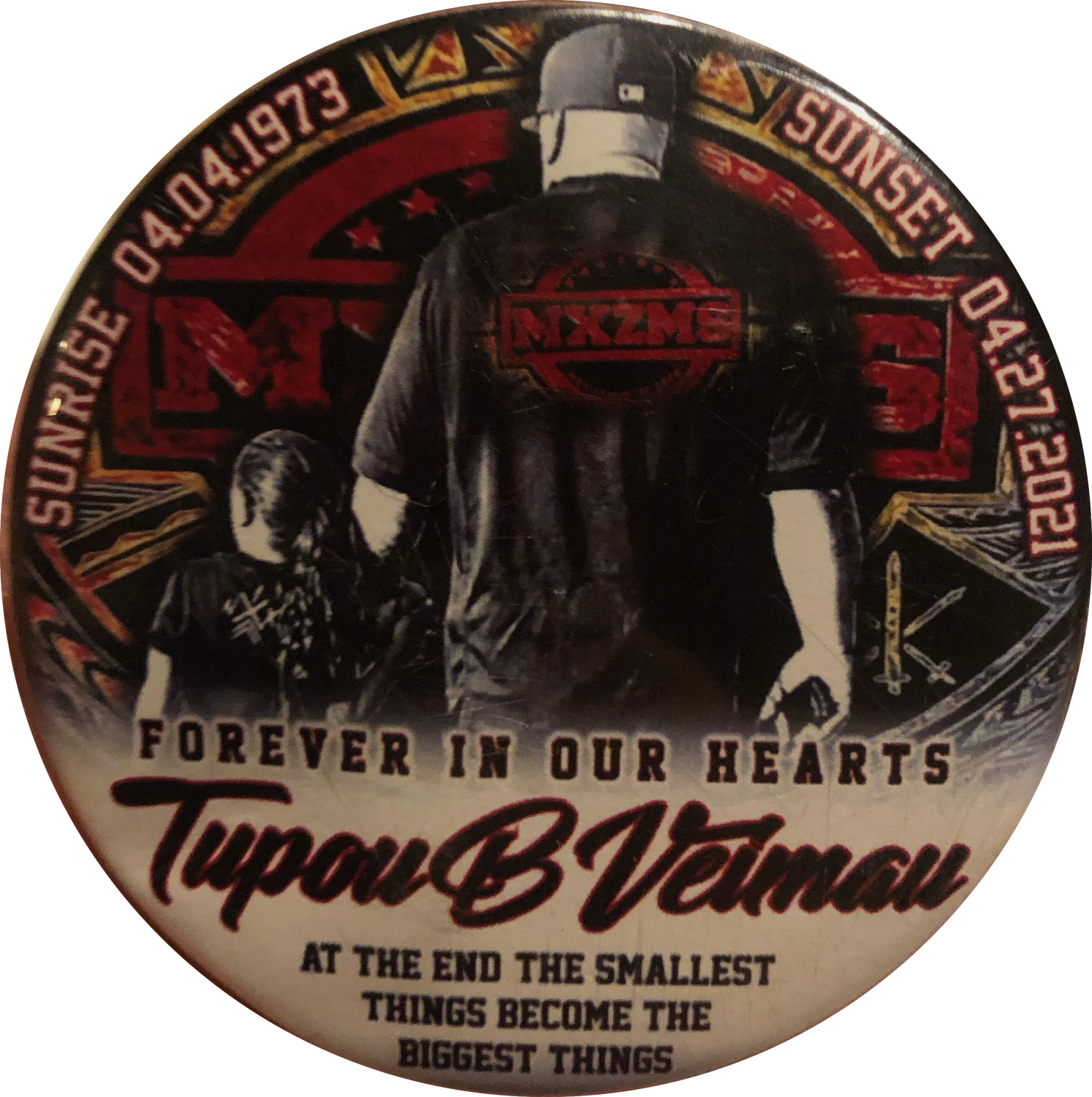
The pins and lanyards can include symbols that represent the person that passed, their interests, and what was important to them. Many also include the date of their birth, passing, and a prayer. For students that live far away from family members, the buttons serve as a connection and reminder of family.
‘I’ve always been closest to just my family members. So losing one was just, it’s hard. So just little stuff like this just so I could keep them with me during the day or during my week, which is very nice because I know I don’t get to see that side of my family much anymore because of where they are and how far they are. So just wearing stuff like this helps me just keep them with me,” Veimau said.
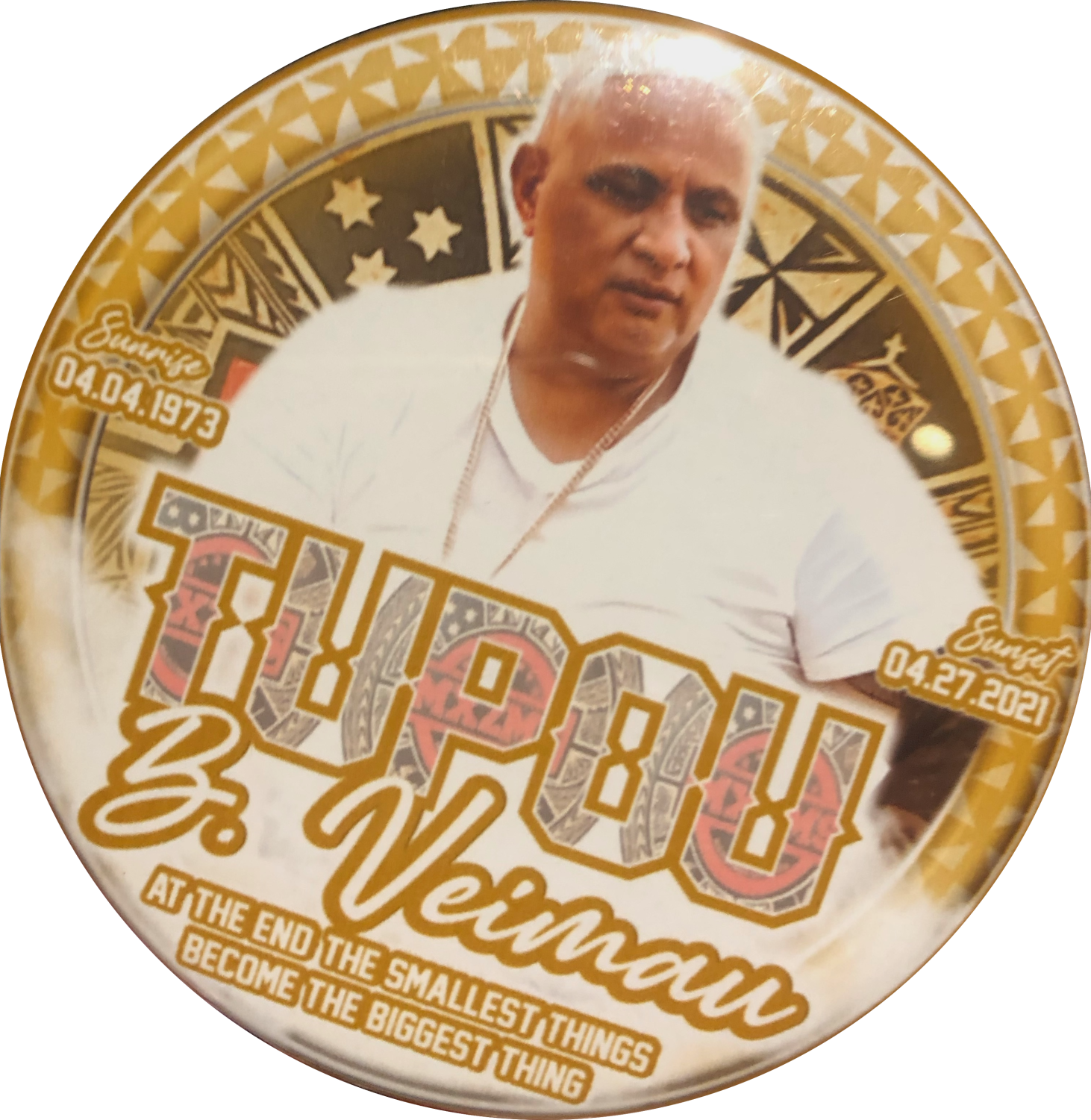
While buttons and backpack decorations are normally seen as a method of self-expression to communicate to others interests, the buttons worn to honor family members are primarily for the remembrance of the personal connection that person had with the family member.
“I do it for more for myself, it’s just knowing that even though they’re gone I still can hold a part of them with me. It’s just comforting in the sense and it’s just walking around, most of the time I don’t even remember that I have it on. It’s just more for my sanity that if I am going through it, I could just look down and I’ll see the lanyard and I’ll see the pin or the buttons. And it’s just something I like to do for myself,” Veimau said.


